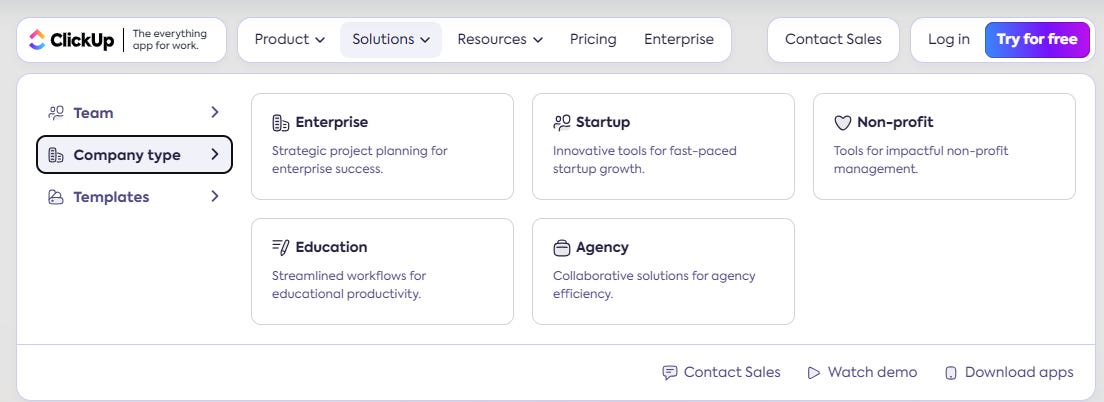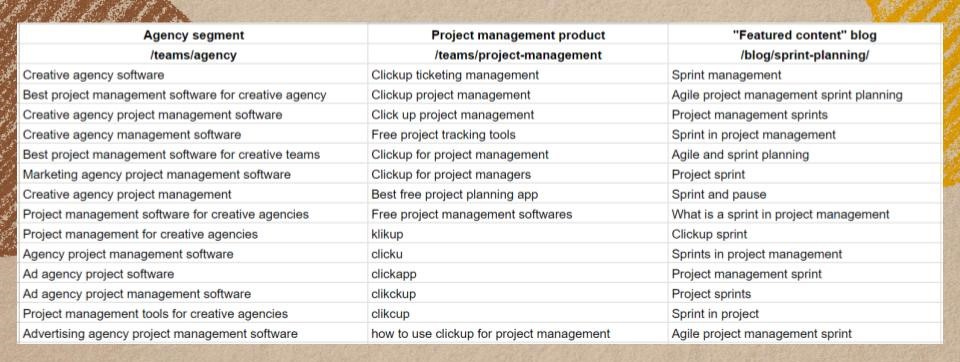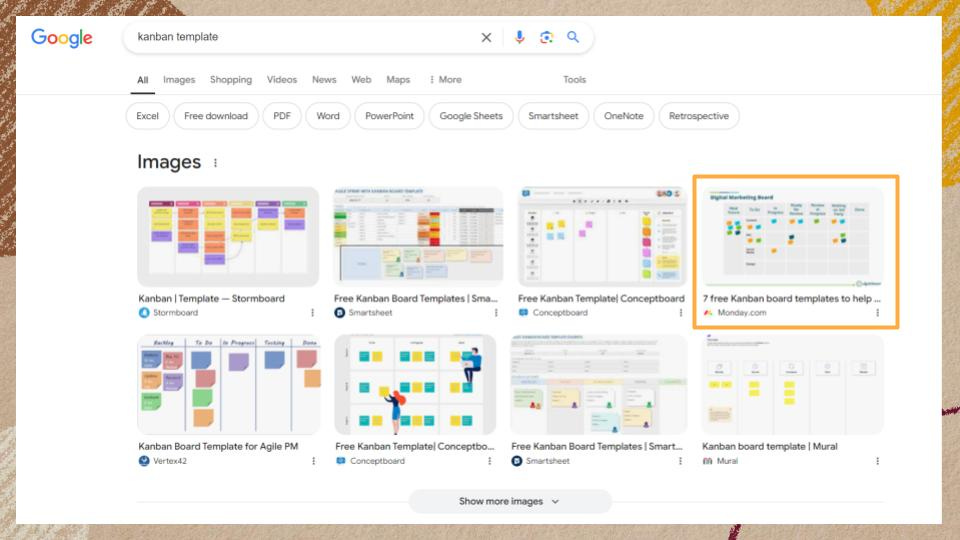Search Engine Agony
Season 8, Issue 12: Voluntarily admitting myself to the Google house of horrors
📬 In this issue:
Visually mapping out keywords (why is this so manual???)
Using video assets for SEO
Does programmatic SEO work for niche B2B?
This week’s recipient of a Mehdeeka picnic blanket is… Joris C — keep an eye out for an email from me.
Dear Mehketeer,
We small team/solo marketers wear a lot of hats, and some of them fit better than others. I’m a reasonably non-technical marketer, and so I rarely deep dive on the technical side of topics but lately I’ve been asked to “look into SEO” by several clients and also motivated by some responses from agencies/vendors/specialists that made me think “well that’s bullshit” to do my own research:
Can I also say I upgraded to the Guru tier of SEMrush for this and it was 100% not worth it 😭 Someone check back in 24 days to remind me to downgrade before they charge me again. The only reason I use SEMrush over AHREFs is literally because I remembered to cancel my AHREFs trial but not my SEMrush trial. C’est la SaaS vie.
If you’re an SEO pro and all of this is super obvious to you, please tell me what other topics your brain goes to when you see these and help me out here 🙏
Mapping out keywords
The phrase “keyword mapping” is literally the first phrase to be used when talking about SEO but when you actually want a visual map of your keywords against your site’s pages… crickets. More specifically, it’s manual spreadsheets.
The concept of topic and keyword clusters is well established but actually assigning everything to your web pages is less well covered.
Here’s a specific example I’m working through:
The company’s sales structure is set up by industry targeting
The company’s website has pages for each product, as well as generic use cases for the products, and then industry specific landing pages, and industry specific blogs and ”featured content”
I want to assign the right keyword to the right page, make sure it’s not already in use somewhere else, and cross-reference this with the search intent for the specific page
And preferrably not in a spreadsheet so that I can also overlay internal linking, but that does seem to be the most well documented way to do it.
The sad news is there aren’t many shortcuts for us B2B marketers. A lot of the keyword planning tools that are supposed to save us time… don’t have the option to specify it’s B2B? For example, when inputting terms like “route planning” for Adiona (B2B last mile delivery), SEMrush suggested… how to check your myki balance?! (For non Aussies, that’s Melbourne’s public transit system card.)
The thing is, that’s a real search term a recent prospect told us they used to find options in the market and we didn’t come up. Yet SEMrush results are all about road tripping and planning holidays in Europe (seriously, this is what it was suggesting.)
Ok so what’s the B2B solution?
Where I can, I do try to get direct search terms from prospects — but they often use really indirect searches. I think it comes down to whether or not your target market is problem and solution aware or unaware.
Problem unaware — not searching
Problem aware, solution unaware — searching weird, roundabout things because even they don’t know the right keywords
Problem aware, solution aware — miracles
So, I try to cover my bases amongst these three by manually compiling lists, cross checking Google Trends to see the “rising” searches, and doing my best to stay on top of industry news for emerging or variations on keywords.
An example - ClickUp’s segmentation pages
To try and find what a big company with similar product/use case/segment/content page structure setup, I looked at ClickUp:
I used SEMrush to lookup what keywords they were targeting for these segment pages vs product pages. Let’s look at their agency segment vs their project management product page vs the featured content from that same product page:
Here are my observations:
The segment pages focus on variations of how the segment address themselves, e.g. we have “teams” vs “agencies”, and we also have different types of agencies, “ad”, “advertising”, “creative”, and “marketing”
The product pages focus on variations of the product category as well as branded terms (and typos), e.g. “ticketing” vs “project management”, and “tool” vs “software”
The blog — which was linked at the bottom of the product page — is really just variations on the ordering of the topic description and is the most straight forward “keyword”
This makes me think about breaking up content by messaging angle, like value proposition vs use case, persona, and so on. Read this previous Mehdeeka for more on this:
I have no neat bow to tie around this topic, it’s not an experiment I’ve been running for 12 weeks prior to writing about like previous issues — expect an update at some point in the future (regardless of whether I get it right or wrong!)
Using video for SEO
If you’ve invested even a little bit into video production, you’ve probably asked “can I hit two birds with one stone and use this for SEO?”
The answer is “yes but it’s reasonably technical, though not impossible for us non-technical marketers.” Here are the tips, direct from Google:
Add video tags to your sitemap and upload it to Search Console for Google to crawl it
Embed the video (probably preferrably through YouTube since Google owns it) onto a page, and have that video be the main thing on the page (this is referred to as the ‘watch page’) — Google explicitly says the below won’t be indexed:
A blog post that reviews an embedded video
A product page with a 360 video of a product
A video category page that lists multiple videos of equal prominence
The watch page has to perform well in indexing before the video itself will be indexed, so don’t just slap it on a standalone page
The video has to have a thumbnail with an attached URL (assuming this is automatic if you use YouTube, otherwise you have to add the thumbnail’s URL to the sitemap)
Don’t hide the video behind a gate, pop up, etc.
Again, if you’re using YouTube, put some effort into the description box with your keywords and video summary. Even if the video is hidden on YouTube itself, if you’ve got it on the website and it’s publicly available, it should pull through all the data you’ve put in there.
The options for how this will show up in search results are the main search results page, the ‘video’ and ‘image’ tabs on search, and the discover page:
Is programmatic SEO (pSEO) useful for B2B SaaS?
First, a quick definition
I’ll admit I’m someone who glazes over when things get a bit technical, so even though I thought I “got” what it was, looking into it deeper gave me a deeper understanding (duh, Kayla.)
Programmatic SEO is when you build a simple landing page template with a bunch of blank spaces for a variable (e.g. city name) and then connect those landing pages to a common database, which connects the blank spaces filled by the database to the search query submitted by a user.
E.g. the template will be “Best hotels in [city]” and Tripadvisor will spit out this:
The “from [AU$55]” is also from the database, where it’ll just pull the lowest price from their database of hotels in Sydney. This way, they can create a landing page for every city in their database without having to manually set up all these pages, and the sheer volume of landing pages will push them into Google’s good books.
But every example I find is for either B2C or super huge TAM SaaS businesses!!!!!!!!!
It’s frustrating being a B2B girlie. We’re not glamorous enough for the fun case studies, and very few of us are working in Monday.Com adjacent businesses that have a million and one templates, for a million and one applications, for a million and one personas.
Does it work for more niche B2B SaaS?
Yes and no. I read a lot that it’s just “talk to your customers”, “know your keywords”, but in reality, sometimes your industry or product just doesn’t have the type of databases that make pSEO possible.
Your industry or product has very standardised templates for ways of working, e.g. legal contract templates (compare example A with B), templates for running meetings, comparisons or conversions (e.g. currency conversions from Wise)
Your have access to a dataset and a message to tie it back to your product, e.g. Zapier has “Connect X to Y”, but you might also have an internal tool that’s scraping other websites for comparison data, security info, “what tech stack is x website using”, or some other manually built database
I think I’ll start saving a folder of programmatic examples I find, because the hardest part with this is finding an application for a niche. If you get the chance to speak to a customer/prospect, try adding “what’s a search you do repeatedly for work?” (like grabbing a document template.)
Google has a repository of freely available datasets that might be helpful to browse through when looking for ideas.
Lastly, here’s an explainer video I found helpful when digesting all of this.
How does this compare to editorial content
Ready to cringe with me? A salesperson asked me recently if by “ramping up content production” I meant “using AI to generate blogs”… as in like, hundreds of blogs a month.
Programmatic is supposed to be quick, scalable, and low lift. Editorial SEO (traditional long form, well written, high value content) is slower, more expensive, and nope, AI doesn’t cut it because it’ll just be mid content that doesn’t rank.
Let’s look at two examples of the same topic being covered by both pSEO and editorial for the search term “kanban template:
Editorial:
This Monday.com article goes in depth on the kanban methodology, provides several templates, and the hero image shows up in the image preview on the search. As of writing this, it’s organically ranked second.
pSEO:
This programmatic landing page from Miro was ranked sixth (Trello was #1), and offers not much additional information aside from the links to the templates in the gallery. The copy is very product focused, and you could argue these two pages are aimed at very different audiences, one familiar and one unfamiliar with kanban boards.
But how many people click the result closest to the top if they’re not loyal to any one brand?
Can I brag that I successfully closed all those tabs?
After this, my laptop has earned a proper shut down instead of just closing it.
I’m definitely about as mature as Moo Deng the baby pygmy hippo when it comes to deep SEO topics, but I feel like I’ve cracked the next layer with this. Fingers crossed Season 9 includes a revisit to this topic with an actual update.
Ciao!
Kayla












I'm on semrush too but I really like ahrefs YouTube channel, lots of great videos.
good tips on the video seo, especially what google will and won't index!